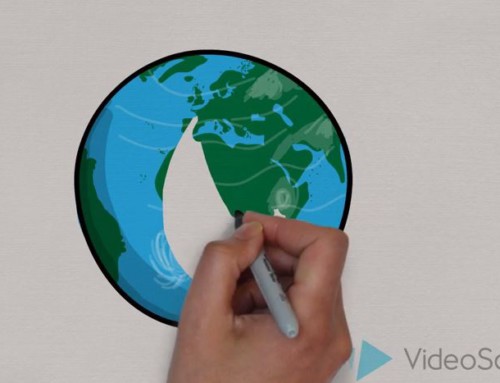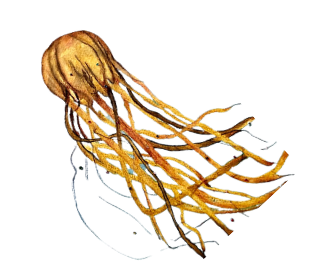We have an obsession-like affair with tuna.
What is it about tuna anyway?
- Tuna sell for record prices on the market.
- Commercially, men have trolled the oceans for decades to fish tuna to near extinction in some areas.
- Recreational tuna-fishing makes up one of the most sought after big-game markets in the ocean.
- Writers pen stories about tuna.
- Scientists study their speed, migration patterns, and reproduction.
Tuna is consumed regardless of demographics. Bluefin tuna is sought after for its butter-like, rich, melt-in-your-mouth flavor and texture. We eat raw tuna in sushi, served medium-rare with sesame seeds in fine-dining restaurants, minced, formed and grilled on a burger bun, sliced thin and topped on a salad, smeared with Shiracha and rolled in rice, and shredded for tuna salad.
But by far, of all humans, the Japanese are not only obsessed with tuna, they have a long-standing love affair with tuna. They breathe tuna. Eating tuna is their culture. Try telling 127 million people to change a history of eating habits. Yeah, see where that gets you.
“Japan is the world’s principle and primary market for tuna.” according to Global Tuna Market & Industry Dynamics.
Japan, an archipelago of 6,852 islands, in the Pacific Ocean, you would think, be prime waters to fish. But the fishing fleets have declined since WWII. In addition, since the 2011 tsunami and earthquake destroyed many fishing fleets and processing plants, Japan imports a majority of its fish. Although Japan’s largest fish market, Tsukiji Market, has shown signs of recovery.
But Japan is also home to several nuclear reactors, one in particular, Fukushima plant, the site of the 2011 earthquake and tsunami.
And now there are leaks of contaminated water.
What does this have to do with tuna? And why should you care?
Regardless of fish species, you should care where your fish comes from, just as you should care where your vegetables are grown. This is the first step in supporting sustainable fisheries and fishermen.Four nuclear reactors were damaged from the 2011 earthquake and tsunami in Japan and the Fukushima plant disaster is a bigger problem than previously realized.
Just days ago, Tokyo Electric Power Company (TEPCO) announced as much as 300 tonnes of contaminated water a day was leaking from the damaged reactor buildings to the sea.*
Ouch! Seems like history repeating itself. Remember the BP oil spill debacle?
Although worth noting, this particular Fukushima leak (the fourth) is only a level one out of a possible seven (the level assigned to the tsunami in 2011), and the oceans have a natural affinity to restore itself, still, contaminated radioactive waste is entering the sea. Where tuna live.
For those of us living in the US, Japan is over five thousand miles away. But fish don’t know that and neither do ocean currents. Granted tuna typically follow the same migratory patterns, feeding and breeding routes annually, but this latest news was something that jarred my memory of a conversation I had with Minako IUE, President of Sailors For the Sea Japan this past May.
I met Minako at the Sustainable Foods Institute this past May in California. Initially I wanted to write about Sailors for the Sea Japan, and its efforts to create a Blue List, a sustainable seafood guide based on the popular Monterey Bay Aquarium’s Seafood Watch guide. Here we are dishing fish at Monterey Bay Aquarium. (Disclaimer: this is raw, unedited footage.)
My goal for meeting Minako was about more than what she has been doing for sustainable seafood. After all, she was the first Japanese person I met who lived in Japan, especially after the Fukushima disaster. I was more than curious. I wanted to know what she thought about the effects of the ocean issues from the tsunami and what was really happening over there.
At this time, Minako hasn’t replied to emails for follow-up. I’m sure she’s busy with the inaugural Blue List sushi reception scheduled for November 2013, not to mention she’s working as an affiliate of Sailors for the Seas to educate the public with Rainy Day Kits, Ocean Watch Essays and of course, creating the Blue List.
But what she did say back in May rattled me a bit.
One of the challenges in Japan, according to Minako, was the large contingent of non-English-speaking population. It’s a challenge because the Japanese government is telling Japanese what they want them to know. And Minako didn’t come out and say there was anything wrong with that, except that her challenge was finding out information from people outside of Japan (CNN for one) to relay back to her people.
Sounds suspicious to me. Especially in light of how TEPCO is handling the current “leak.”
Minako is concerned, that much I know. Enough to work to create Blue List, a sustainable seafood guide. And for that, I’m grateful. Thank you Minako! Now please call or reply to my email!!!
My curiosity continues…
- Can the Japanese population and the world continue to eat tuna at a sustainable rate without tuna becoming extinct?
- Is it safe to eat tuna? We already know tuna contains high levels of mercury, but now do we need to worry about radiation, too?
- Where will tuna fall on the Blue List guide? Seafood Watch has Bluefin tuna on the avoid list.
- Will the Japanese government test fish from its waters before going to market?
- Is TEPCO telling and doing all it can? Is there already substantial damage to the sea and fish?
- How will contaminated water affect the US west coast fisheries? Will the US start to test fish for radiation? When?
I don’t have the answers to these questions, but I will stay vigilant about following tuna fisheries news and science.
Have you gone bananas with all this info and these “what-if” questions?
Before you get too freaked out about radiation in the water supply, or levels in tuna, check out this Forbes article written last week about bananas and radiation, note the comment section for especially compelling commentrary.
Furthermore, as serious as this tuna issue may seem, the 2011 Japan tsunami and earthquake catastrophe, which killed tens of thousands of people, is in the long run, far more problematic to Japan and the world, than my or anyone’s obsession about sustainable tuna. God bless the survivors.
Finally, here’s an updated video on safety at Fukushima and TEPCO from Bloomberg.
Now I’ll take you back to my opening quote in Tuna: explored and exposed Part I:
“In the end, we will conserve only what we love, we will love only what we understand, and we will understand only what we are taught.” Baba Dioum Senegalese environmentalist
Thoughts?
*BBC
Additional reading:
[/fusion_builder_column][/fusion_builder_row][/fusion_builder_container]




